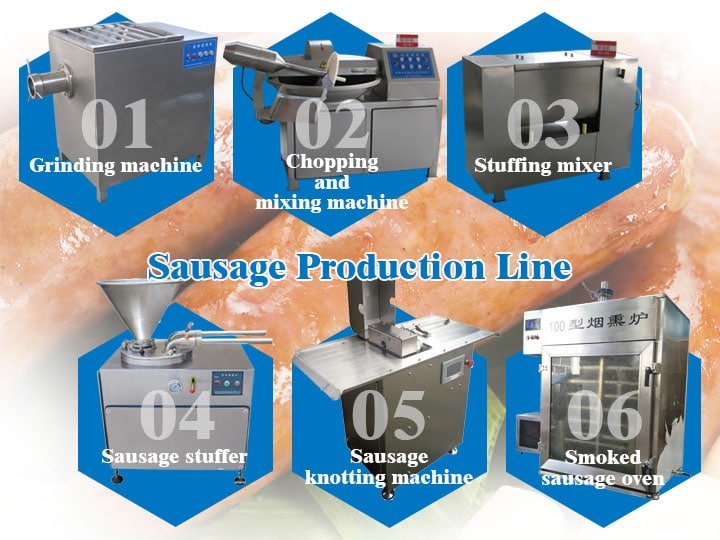How to make sausage? Sausage making recipes
Sausages are generally made by pouring pork or sheep’s small casings (or large casings) into flavored meat. Today, sausages are very common in our daily lives, and most of the sausages on the market are produced by food processing factories using sausage processing lines. So, how do we make sausages at home? Here I will…

Sausages are generally made by pouring pork or sheep’s small casings (or large casings) into flavored meat. Today, sausages are very common in our daily lives, and most of the sausages on the market are produced by food processing factories using sausage processing lines. So, how do we make sausages at home? Here I will share several sausage making recipes here.
How to make sausage at home?
The method of making sausages at home is very simple. Although the processing flow is similar to the method of industrially producing sausages, the operation is relatively simple due to the small output. The process of making sausages at home mainly includes: preparing raw materials, preparing meat fillings, washing casings, enemas, knotting, and air-drying sausages.

Step 1: Prepare materials
1 kg pork intestine, 10 kg pork leg meat, 100 grams of salt, 80 grams of sugar, 40 grams of chicken essence, 5-6 tablespoons of high spirits, 1 bag of spicy powder, 1 bag of thirteen spices, 1 bag of five spices powder, salad oil 100g, soy sauce 5 tablespoons, chili powder 5 tablespoons
Step 2: Making mincemeat
Wash and peel the pig’s hind leg, then cut it into small nail-sized pieces. Next, add the prepared seasoning and mix well, then marinate for two hours. If you don’t want to cut the meat by hand, you can also use a meat grinder to cut the pork into small pieces. However, the meat filling processed with a meat grinder is still inferior to the diced meat cut by hand. The fat-to-lean ratio of the diced stuffed meat with good taste is preferably 3:7.
Step 3: Processing casings
Remove the fat from the outside of the pig’s small intestine and wash it off with flour. Then flip the small intestine, rub it with flour, and wash it. This process has to be repeated twice. Then use the cutting board and chopsticks to scrape off the fat from the pig’s small intestine. In the process of scraping the small intestine, the tap water should be kept small so that the slimy fat can be washed away at any time.
Step 4: Sausage filling
After the casing is scraped, wash it. First wash with a little white vinegar, then rinse with clean water; then wash with a little white wine, then rinse with clean water; finally wash once with alkaline water, then rinse with clean water. Finally, turn the small intestine over and pour water into it to check whether the casing is damaged. If not, soaking the casings with light saline for one night can enhance the elasticity of the casings.
Sausage filling is recommended to be filled with cut beverage bottles because its opening is just right. Tighten the bottom of the washed casing with a string or tie it directly, put it on the mouth of the bottle, and pinch it tightly with your hands. Place the mincemeat in the bottle and poke a few times with chopsticks to fill the casing. Then tighten the sausage segments with cotton thread so that the sausages are filled.
Step 5: Air-drying of sausage
The prepared sausages should be hung in the shade to dry. Take care not to stick the sausages together while hanging. And remember to turn inside and out once a day to avoid that the casing on the dark side cannot be dried. Sausage drying time is about 7-10 days.

